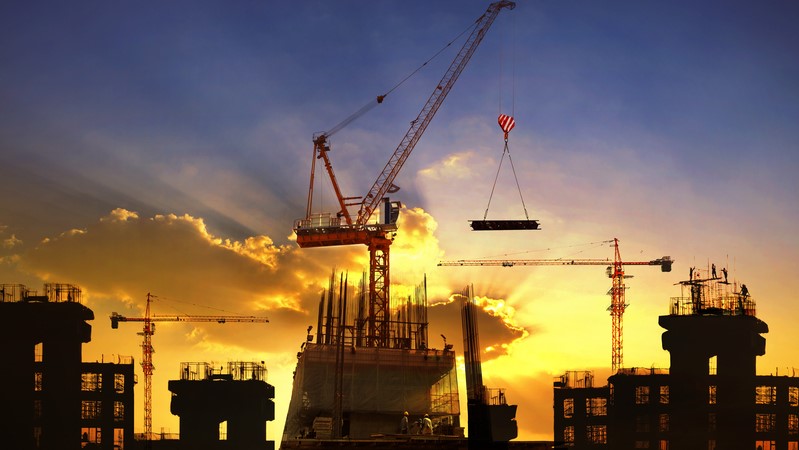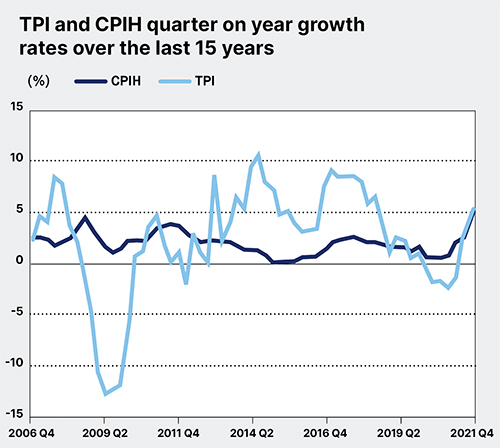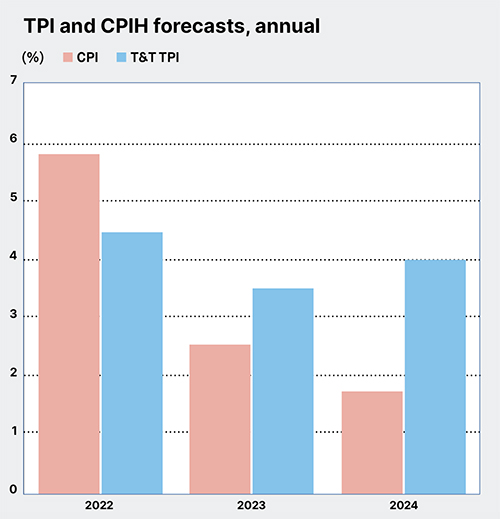
While general inflation is expected to recede, the industry’s measure is likely to remain higher, writes Kris Hudson.
The unprecedented effects of the pandemic have helped general UK inflation to hit its highest rate in three decades, up 5.4% month on year in December 2021. The pressure is expected to continue in the short term on the back of rising energy costs, changes to regulated rail fares and increasing wage pressures.
But the Bank of England is optimistic that interest rate rises will bring inflation down from a possible high of 7% in spring this year towards the target of 2%.
For construction it could be a different story. To understand why, we need to look at the data, and the different measures of inflation.

The Consumer Price Index including owner occupiers’ housing costs (CPIH) is the Office for National Statistics’ (ONS) preferred measure of general inflation, while for construction the industry standard is the Building Cost Information Service’s (BCIS) All-in Tender Price Index (TPI).
Both measure inflation using different ‘baskets of goods’. Bread and water are not comparable to bricks and mortar. So, rates of change can differ, with the CPIH tending to be less volatile and usually exhibiting shallower growth.
While both indices typically move in the same direction of the business cycle, as evident during the global financial crisis, they can also diverge significantly.
With an ageing workforce and reduced access to migrant labour placing pressures on wages, one big driver for pressure on TPI is the persistent skills shortage in construction. Interest rate increases, while beneficial for general inflation, can hamper the ability to pay loans and reduce cashflow availability, potentially leading to insolvencies and diminished capacity.

So the Bank of England’s measures to reduce CPIH may not help TPI. TPI is forecast to be lower than the CPIH in 2022, due to a higher base level in 2021 as commodity and material escalation was felt more keenly in construction than in the wider economy. However, it will probably remain elevated for longer – with Turner & Townsend predicting a TPI rate of 4% in 2024, by which time CPIH is forecast to have returned below 2%.
Construction businesses looking to navigate this landscape must act to increase resilience and manage inflation long term. Firms should take a forensic look at their domestic and global supply chains to identify weaknesses and plan for them.
Looking forward, industry leaders should focus on boosting productivity and resilience – through digitalisation, adoption of modern methods of construction (MMC) and longer-term thinking about the power of major projects to build skills and capacity across the sector as a whole.
Kris Hudson is an economist and associate director at Turner & Townsend.











